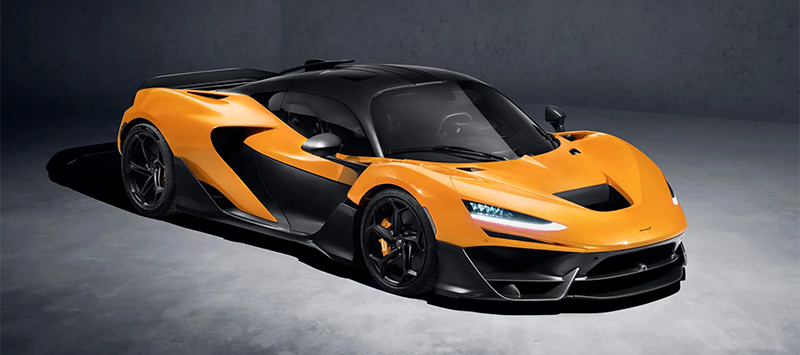20 January 2025
The McLaren W1 & Ferrari F80... Let's Compare!

The Holy Trinity of hypercars, the McLaren P1, LaFerrari, and Porsche 918 Spyder, now has a sequel of sorts. However, Porsche has opted out, shelving its all-electric Mission X concept, perhaps in response to the lukewarm reception of similar electric hypercars like the Rimac Nevera and Lotus Evija. What remains is a fierce showdown: McLaren W1 versus Ferrari F80. Let’s dub it the Unholy Duality. So, how will this rivalry unfold?
For one, the screaming V12s are gone. The Ferrari F80 boasts a 3.0-litre twin-turbo V6, paired with a front electric axle to create a 4WD hybrid powerhouse. Its design channels an ’80s futuristic aesthetic. Brutal, dense, and aggressive. Drawing on technology from the 499P endurance racer, the F80 packs 1,183bhp, rockets from 0–124mph in a mere 5.7 seconds, and produces up to 1,050kg of downforce.

McLaren’s W1 is equally jaw-dropping, if not more so. It combines a 4.0-litre twin-turbo V8 with a radial flux electric motor, delivering a staggering 1,258bhp. Lighter than the F80, the W1 still lags slightly in acceleration due to its rear-wheel-drive layout, but it holds its ground with 1,000kg of downforce. The eventual head-to-head between these two titans promises to be monumental.
Yet, the question looms, does anyone really care? The thrill of driving either the W1 or F80 is undeniable, with performance figures that boggle the mind and promise adrenaline-pumping experiences. But perhaps the relentless quest for “more” has reached its limits. On the road, there’s little opportunity to fully exploit such capabilities, reducing the experience to fleeting moments of exhilaration. In that context, does it become a bit of a letdown?
The answer seems to be both yes and no. Despite these concerns, the W1 and F80 have been resounding successes. They’ve sold out 399 McLarens and 799 Ferraris, raking in over £23 billion in revenue. Interest is sky-high, with the F80’s reveal video pulling massive attention, and intense competition over press drive invitations. Any critique seems almost futile against such fervent enthusiasm.

Still, we have to wonder, are these cars becoming predictable? Are they memorable? In today’s hypercar landscape, true innovation is defined by contrasts like the GMA T.50, which champions lightweight purity and usability, or the Aston Martin Valkyrie, which takes aerodynamics to extreme levels. These cars are as inspirational now as the Ferrari F40 or McLaren F1 were in their respective eras.
In comparison, the W1 feels like another McLaren, only more extreme. The F80 follows a motorsport trajectory that some enthusiasts might wish to dial back, favouring the return of lighter, more agile cars with ear-splitting engines. Both the W1 and F80 symbolise the endless chase for greater performance, yet paradoxically, they might leave some feeling that they don’t quite offer enough.